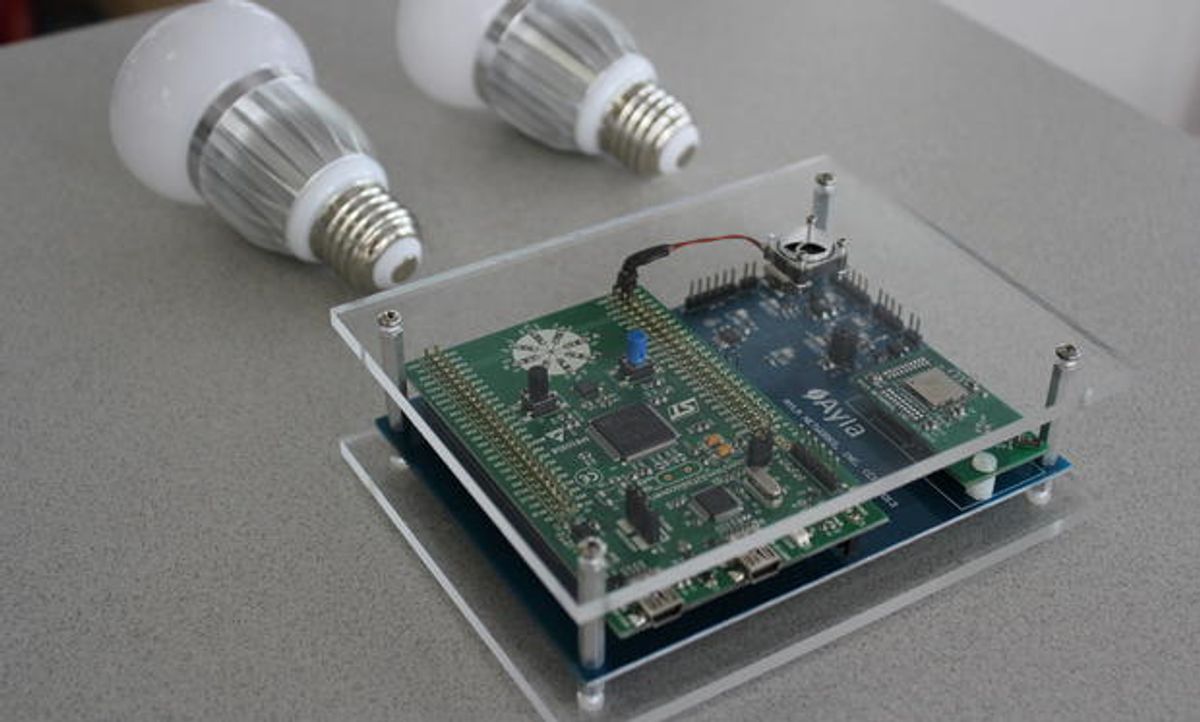What good is it for the ordinary machines in your house—thermostats, garage door openers, refrigerators, and more—to become "smart," if the added features go unused? Ayla Networks wants to unlock those features for users by helping manufacturers make them controllable from smartphones.
The Silicon Valley-based start-up last week unveiled a Wi-Fi module with software to connect household devices to home networks and cloud services. The goal is to make it easier for manufacturers to add wireless connectivity and write apps for their products, be they appliances or light bulbs.
Ayla, which has raised $5.4 million from Voyager Capital and Crosslink Capital and had been quiet since its founding three years ago, is one of many companies betting that the “Internet of things” in consumer products, after false starts in the past, is finally beginning to materialize. They may be right: Nest Lab’s Learning Thermostat and Philips’ Hue “connected” LED bulbs have attracted consumer interest and more home automation products are being developed all the time.
The biggest barrier to the consumer Internet of things isn’t necessarily the hardware—Wi-Fi chips are already in millions of devices, notes Ayla founder and CEO David Friedman. More important is simplifying the networking and application software for manufacturers. “There’s massive pent-up demand to do this at low costs and frankly, it is the software to tie it all together that is the piece to make it all go,” he says.
Embedding Ayla's networking software into devices should speed up product development, because manufacturers can let the software manage connectivity and security. Ayla also offers a cloud service that makes it easier to write applications for connected devices. For example, the software lets people register devices on their home Wi-Fi networks in one step or control many devices from a single smart phone application. Prewriting these basic software features for original equipment manufacturers (OEMs) will enable more smart objects, says Friedman.
Ayla charges a one-time fee of “a few dollars," rather than a recurring license. Its first customer is Chinese Internet company Sina, which is using the system to provide up-to-date weather forecasts to a Wi-Fi-enabled “weather station” device. Friedman says another company is interested in using Ayla’s platform to build a smart plug that would allow people to remotely control appliances and monitor energy usage.
Friedman expects OEMs to prefer that users manage their devices, even a garden irrigation system or a pool pump, from their smart phone, rather than the device itself, thereby eliminating touch screens and reduce their production costs.
Household appliance makers have been touting "smarts" for years, which they hope will make it easier to remotely diagnose problems and make fixes to white goods. For consumers, smart appliances could save money by running at off-peak times or perhaps send a text to the owner when a load of laundry is done. But, in general, smart appliances have been slow to take off, perhaps because prices are higher and the benefits aren't always clear.
But other smart devices have been more successful. Wireless thermostats, such as the one from Nest, can be remotely controlled from a smart phone, a handy feature, and they typically are easier to program from an app. Early buyers of wireless light bulbs appreciate the ability to set a lighting schedule and control the color of light. Perhaps smart thermostats and LED bulbs offer some insight into how the Internet of things in consumer devices will take shape. In both cases, the appeal comes not from the wireless connectivity, but from the convenience of remote control and the added functionality of the apps.
Photo: A wireless development kit for device manufacturers. Credit: Ayla Networks.



